The Be Quiet! Dark Power Pro 1500W PSU Review: Big Power
by E. Fylladitakis on January 10, 2022 9:00 AM EST- Posted in
- Cases/Cooling/PSUs
- PSUs
- be quiet!
- 1500W
- 80Plus Titanium
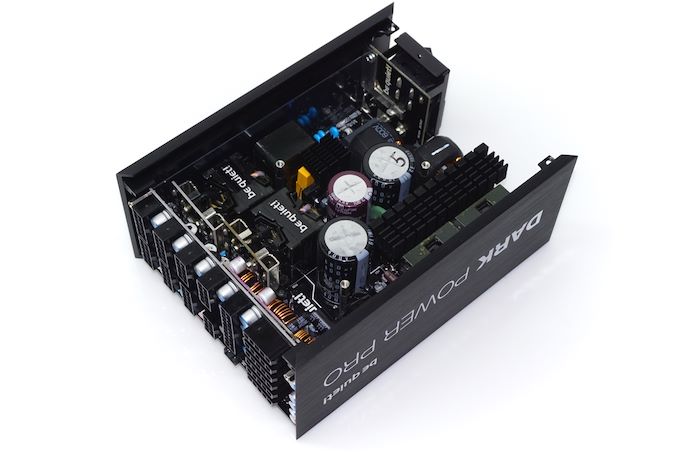
Be Quiet! is a German manufacturer that mainly produces PC cases, power supply units (PSUs), and cooling-related products. As the company's name suggests, their products are designed with quiet operation primarily in mind. The company is no stranger to the North American markets, slowly but steadily increasing its presence over the last few years. Their commitment to continue to increase their presence in the United States became apparent with the recent founding of a US-based service center in California for seamless after-sales support.
Be Quiet!’s main market focus currently lies with PC PSUs, with the company offering more than three dozen different designs split under eight different series. Although most of their products are targeted toward mainstream users, and are consequently designed to be balanced between cost-effectiveness and performance, the company is broadening its product ranges every few months, offering some impressive high-end designs to round out their product lineups.
In today’s review, we are taking a look at the pinnacle of Be Quiet!’s PSU design efforts, the Dark Power Pro 12 1500W (BN647). The Dark Power Pro has a long list of features, the highlights of which are the 80Plus Titanium efficiency rating, the patented Silent Wings cooling fan, and the monstrous 1500 Watts continuous (and 1600 Watts peak) output, which are balanced by a colossal $450 price tag. Be Quiet! clearly is aiming to take on the halo products of the few renowned manufacturers that released >1.5 kW products in the past couple of years, setting a very high bar for our expectations.
| Dark Power Pro 12 1500W Power specifications ( Rated @ 50 °C ) | |||||
| AC INPUT | 100 - 240 VAC, 50 - 60 Hz | ||||
| RAIL | +3.3V | +5V | +12V (combined) | +5Vsb | -12V |
| MAX OUTPUT | 25A | 25A | 125A | 3.5A | 0.5A |
| 150W | 1500W | 17.5W | 6W | ||
| TOTAL | 1500W | ||||
Packaging and Bundle
Be Quiet! supplies the Dark Power Pro 12 1500W PSU in a large, sturdy, and externally aesthetically minimalistic cardboard box. Despite its simplistic appearance, the packaging is very sturdy and of high quality. Practically nothing is printed at the front of the box but plenty of details can be found on the sides and rear.
A rich bundle can be found inside the box, as expected from a halo product such as this. Inside the box we found the standard AC power cable, four typical mounting screws and four thumbscrews for the user to select whichever they prefer, ten cable straps, a few cable ties, wire combs, and a PCI slot switch. The PCI slot switch can be used to turn the “overclocking” mode on and off. When off, the PSU has multiple virtual 12V rails, monitoring them for overcurrent individually. When overclocking mode is on, it monitors the entire 12V line as a single rail, preventing the PSU from shutting down when a single connector draws a little bit too much power. The catch is that the latter mode cannot discern single-wire critical faults and such a fault could lead to a massive current over a single wire, irreversibly damaging it.
The Dark Power Pro 12 is a fully modular design, allowing for the removal of every DC power cable, including the 24-pin ATX connector. All of the cables are black, with black connectors and individually sleeved wires. We also found not one but two floppy disk power adapters inside the packaging, an amusing but very odd thing for such a product in 2021.
| Dark Power Pro 12 | ||
| Connector type | Hardwired | Modular |
| ATX 24 Pin | - | 1 |
| EPS 4+4 Pin | - | 1 |
| EPS 8 Pin | - | 1 |
| PCI-E 6+2 Pin | - | 10 |
| PCI-E 8 Pin | - | - |
| SATA | - | 16 |
| Molex | - | 8 |
| Floppy | - | 2 |
The Be Quiet! Dark Power Pro 12 1500W PSU
External Appearance
The Be Quiet! Dark Power Pro 12 is visually imposing, featuring a unique layered chassis. The exterior is almost entirely black, with very smooth brushed surfaces and sharp edges. The chassis is very long, measuring 200 mm deep, which makes it incompatible with a large number of smaller cases, but this shouldn't be an issue for the kind of large computers where you'll need (and be able to cool) 1kW to begin with.
Chrome fonts form the series and company logos on one side of the unit. The other side is covered by a sticker with the unit's electrical specifications and certifications. The top side of the chassis is almost perfectly clean, with the small exception of the warranty sticker. A massive on/off switch can be seen at the rear side of the unit, right below the IEC C19 connector, which was required considering the high current draw when the PSU needs to be powered from a 115V AC source.
The front side of the Dark Power Pro 12 is filled to the brim with the connectors for the modular cables. Be Quiet! is using a straight 5-pin connector for the SATA/Molex cables, dual row 10-pin cables for the CPU cables, and dual row 12-pin connectors for the PCIe cables. The ATX cable connects to two connectors at the PSU's side, a large 20-pin connector, and a second 8-pin connector. The printed legend indicates which virtual 12 V rail corresponds to every connector. Even though each group consists of physically identical connectors, users should be careful not to connect the cables randomly but as recommended in the manual, because the default mode of the Dark Power Pro 12 is with multiple 12V OCP rails, meaning that the PSU will shut down if the load is improperly balanced.
Internal Design
We usually find Be Quiet! using their own fans to cool their PSUs, and the Dark Power Pro 12 is no exception, using a Silent Wings 135 mm fan under the finger guard. The only difference here is that the Dark Power Pro 12 is using a frameless version of the fan. This design supposedly reduces the intensity of the vibrations and increases airflow, but there is a downside to it – if the fan ever fails, finding a replacement will be a challenge for anyone but the manufacturer. The maximum speed of the 135 mm fluid-dynamic bearing (FDB) fan is 2600 RPM, an extremely high speed for a fan of this size.
Be Quiet! employs several OEMs for the design and production of their PSUs. The OEM behind the creation of the Dark Power Pro 12 is Channel-Well Technologies, or CWT. Many experienced enthusiasts might have guessed that sooner by the presence of the multiple virtual 12V lines, a design tactic frequently employed on their platforms.
The platform that the Dark Power Pro 12 can be a very interesting discussion and research topic. It is not a fully digital platform, but rather it's a hybrid. Specifically, it uses digital controllers on the critical parts and analog controllers on the secondary rails that derive from DC-to-DC converters.
Diving deeper, there was nothing special regarding the filtering stage, which comprises a total of six Y capacitors, two X capacitors, and two filtering inductors leading to a dual input rectifying bridge configuration. The bridges do not have their own heatsink but are attached to a large heatsink that holds most of the active primary side components. There are not one, not two, but three APFC capacitors to cope with the massive power requirements of the unit. Two capacitors are made by Nichicon and one is supplied by Nippon Chemi-Con.
Four transistors form a full-bridge inversion topology at the primary side of the unit. There are two transformers but a single output, most likely because there was no room for a single transformer that was powerful enough – or a single transformer powerful enough that could fit in this design was too expensive. The twelve MOSFETs that generate the 12V rail on the secondary side are all attached on vertical daughterboards with their own heatsinks.
The 3.3V and 5V lines are being generated via the DC-to-DC conversion circuits found on the vertical PCB near the front of the unit. All of the secondary lines, including the 5VSB line, are governed by an analog controller. There are numerous electrolytic and polymer capacitors to be seen in the Dark Power Pro 12. Nichicon, Rubycon, and Nippon Chemi-Con supply the electrolytic capacitors, while FPCAP and United Chemi-Con supply all of the polymer capacitors. And although five different capacitor suppliers are involved in the creation of this specific PSU, all of them are renowned for their high-quality products.


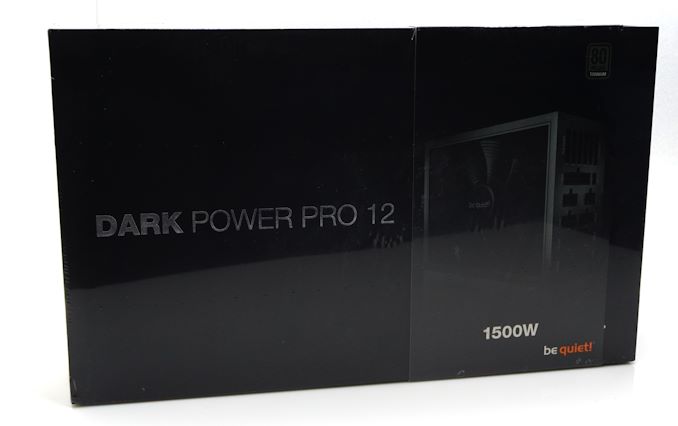
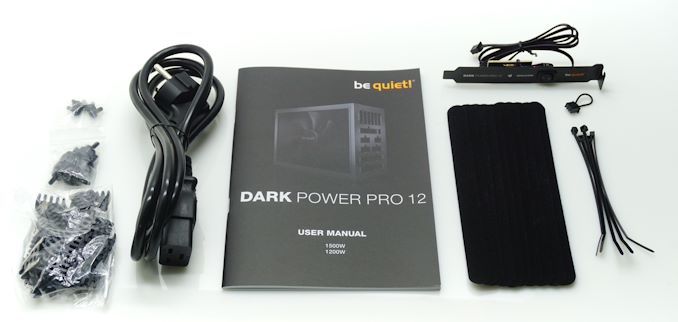
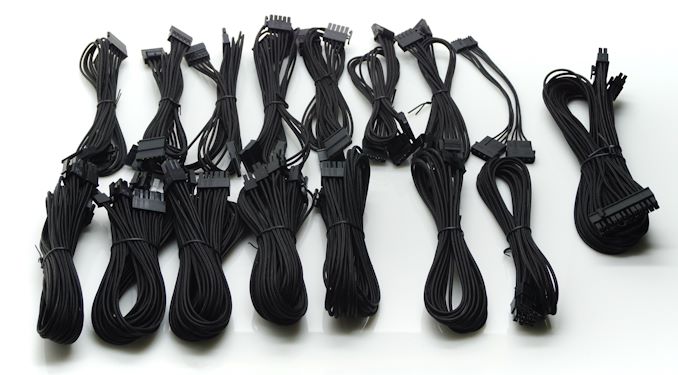
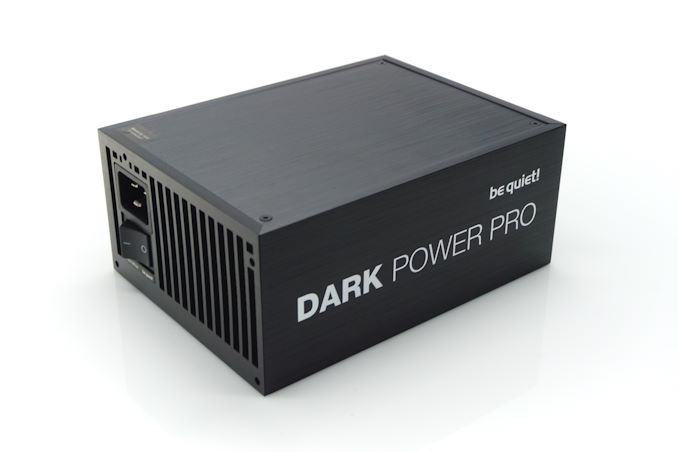
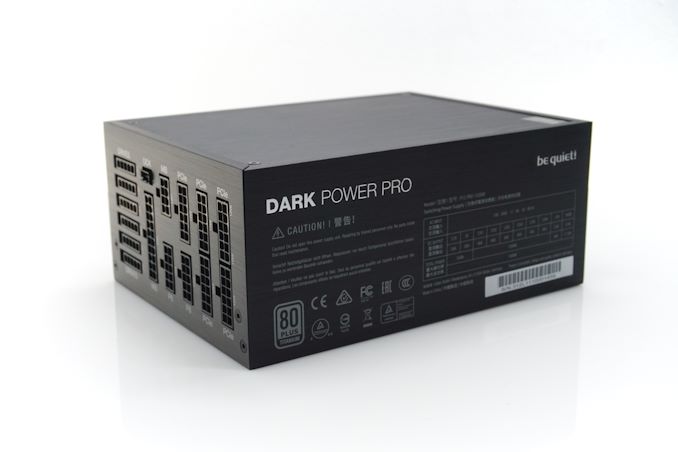
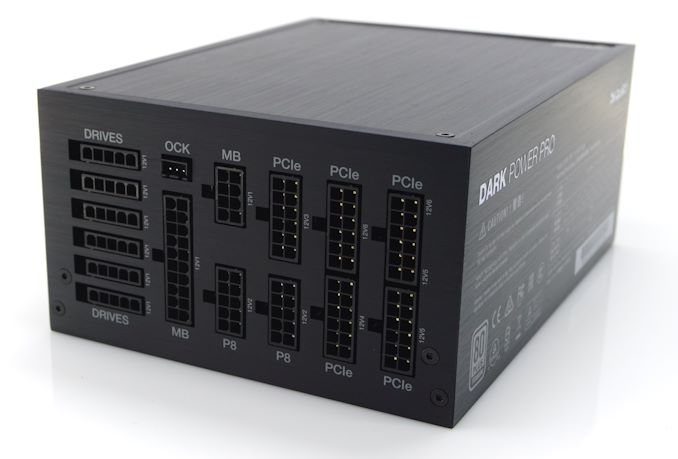
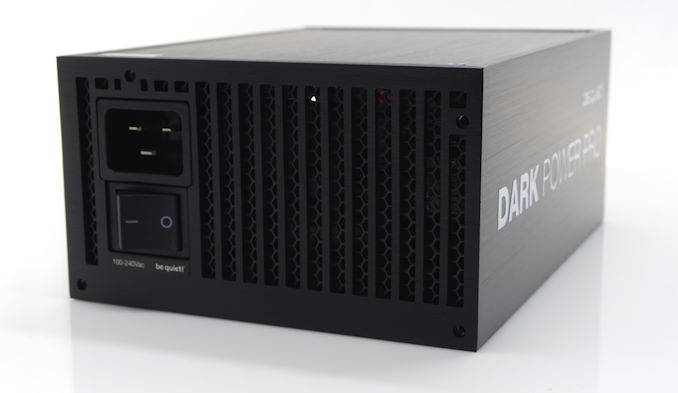
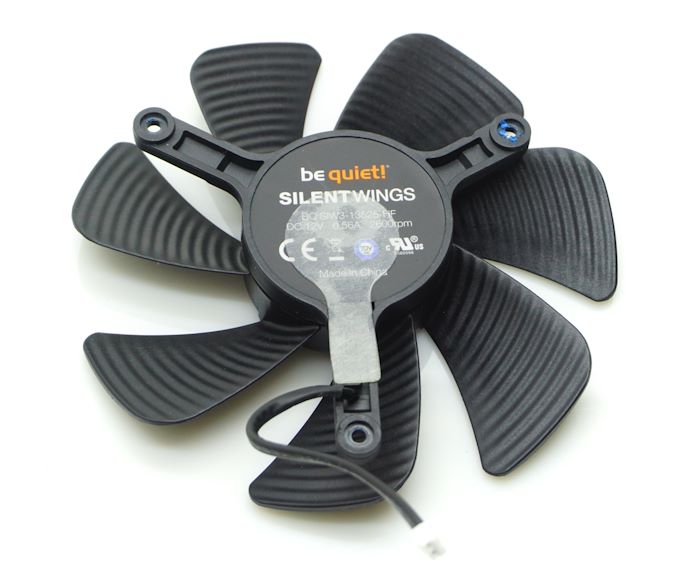
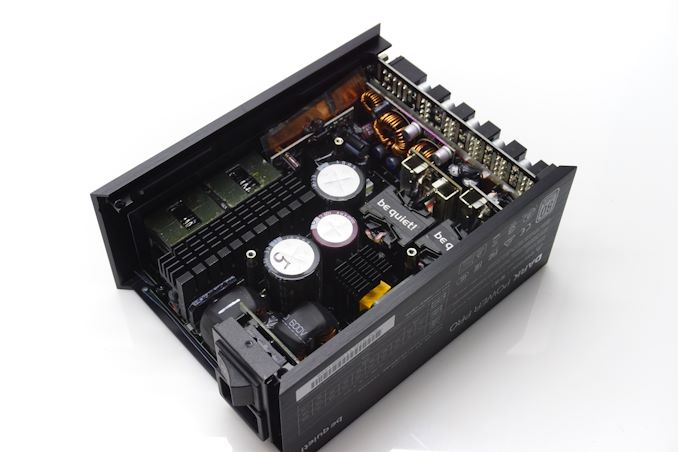
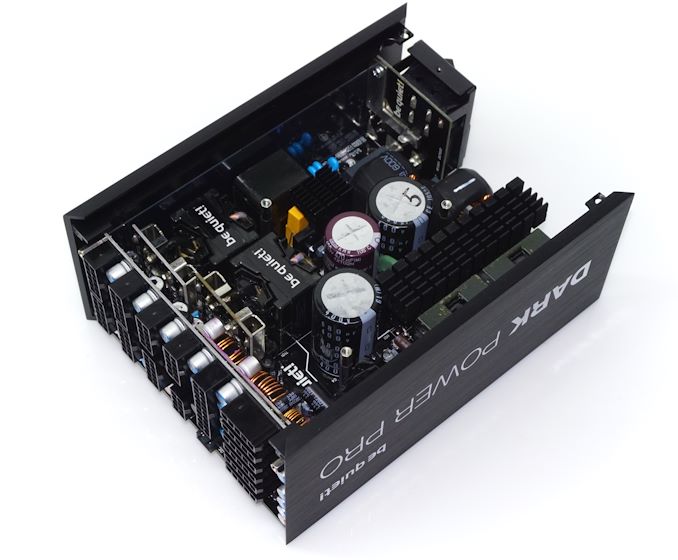
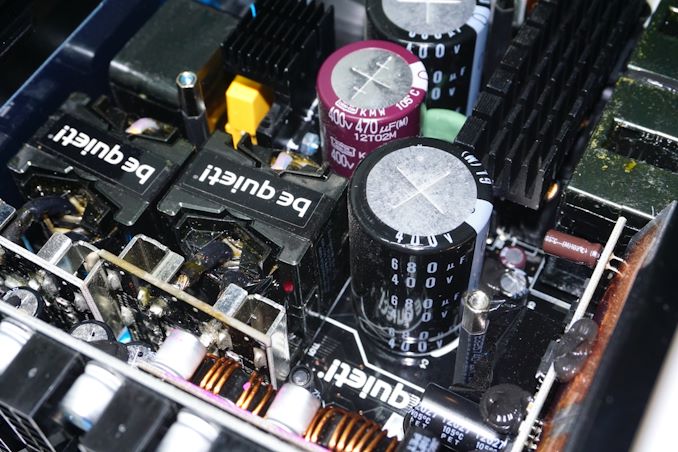

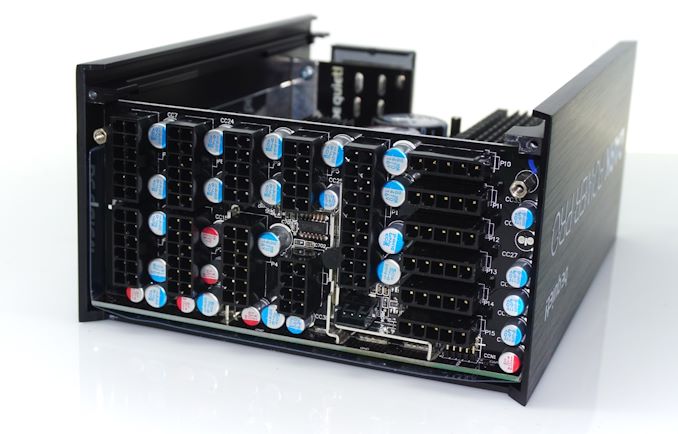








41 Comments
View All Comments
Speed-o - Monday, January 10, 2022 - link
Given that SLI is basically dead, what's the primary market for a 1500W PSU these days?The 3090 is a total porker. But even that and a 12900K is below 1000 watts, isn't it?
meacupla - Monday, January 10, 2022 - link
maybe RTX3090+12900K will be under 1000W on sustained loads, but when it comes to transient loads, 1000W is unlikely to be enough.RTX3090 transient load spike is reported by seasonic to be upwards of 550W. If you want to leave a bit of headroom with a 12900K, you're probably looking at, at least, 1200W PSU.
And then we also have the RTX3090Tie incoming, which is even known to be more power hungry than RTX3090. So maybe 1500W will be the new 'norm' for high end gaming desktops.
austinsguitar - Monday, January 10, 2022 - link
usually a 1200w psu has an ocp of up to 1500w or so. how they deal with that is different, but 1200w will still probably be the maximum needed.Showtime - Friday, January 14, 2022 - link
How are you mixing transient loads with sustained loads? If transients are 550w according to you, how are the sustained loads 1k? The issue with transient loads is the spike/speed, and any decent 850w PSU will cover it. Problem is too many people have a little bit of information, but understand the whole picture. For a gaming there is no situation where the GPU, and 12900k will be under full load. You are either GPU, or CPU limited, and there are no games fully utilize 16 threads. That's why you can use power consumption (GPU+CPU) as measured by 3rd party sites, give yourself 100w of headroom, and can be fine with any decent PSU. The only people who had issues after that, were using cheap PSU's, or unit's with design, or QC issues, like those EVGA's a couple years back.satai - Tuesday, January 11, 2022 - link
SLI may be dead but multiple GPUs for computation are not dead.shabby - Tuesday, January 11, 2022 - link
Or mining...lilkwarrior - Wednesday, January 12, 2022 - link
mGPU is not dead. The 3090 and up have NVLINK for a reason. You're talking like you're a gamer. Productive GPU users use mGPU all the time; even the 2019 Mac Pro has 1400W and optimized for mGPU rendering.lilkwarrior - Wednesday, January 12, 2022 - link
Note that all that happened in gaming is that Microsoft in a consumer-first move delegated mGPU mode to game software engineers instead of allowing Nvidia, AMD, or any new player like Intel from dominating mGPU rendering in games by the means of drivers.DX12 mGPU even allows you to use iGPU and dGPUs together, pool the memory of multiple GPUs, and use GPUs from different vendors together.
Game developers haven't elected to leverage it; that said, a single GPU could do 4K@60hz which was last gen's optimal target being the max for HDMI 2.0 for the highest tier consoles; gaming is a console-oriented business.
With current-gen consoles and HDMI 2.1, it can be more feasible again to pursue mGPU gaming support by game developers to accommodate 4K@120hz which will be the standard for the highest end version of PS5 (PS5 Pro) and Series X (who knows what that will be called).
lilkwarrior - Wednesday, January 12, 2022 - link
I will emphasize SLI is dead because it's deliberately replaced by DX12 mGPU mode which makes much more sense–especially now that Intel is also making dGPUs.It should stay dead because it's 2022. Current gen games should be permanently making the transition to DX12 and Vulkan that both support DX12 mGPU mode.
Xajel - Thursday, January 13, 2022 - link
Multi GPU for compute is not dead, PS. some people try to not fully saturate their PSU, this keeps their PSU cool, lengthen it's life time, and maybe even give it more efficiency.